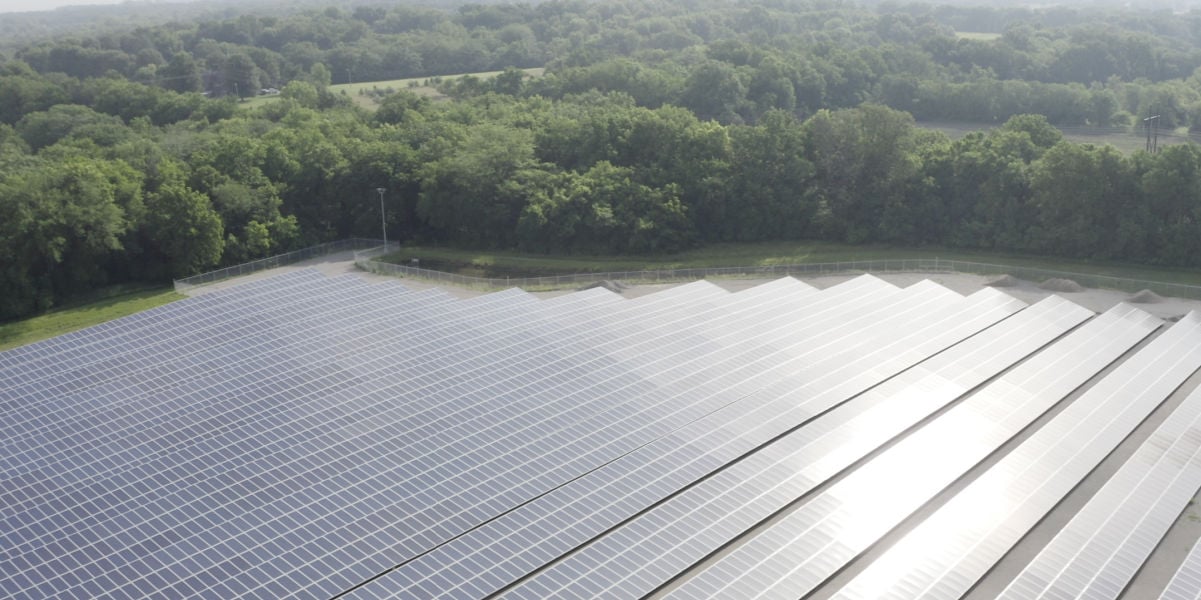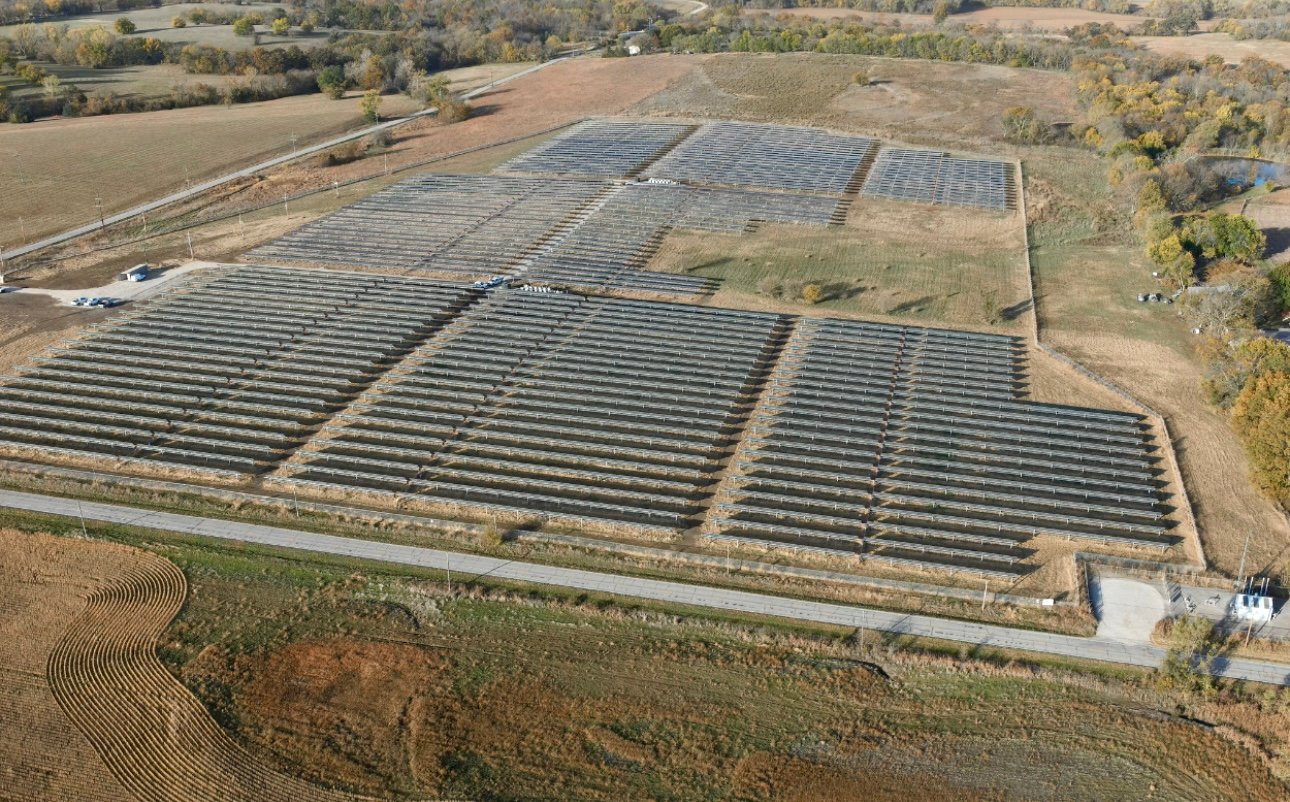Case Study: Osawatomie Solar Array
Evergy is committed to providing our customers with cost-effective, reliable renewable energy solutions to help build a more sustainable future....

Advances in energy technology have shifted how the electrical grid is structured. A system that once relied mostly on centralized, carbon-intensive power plants is slowly shifting to a more decentralized model with an emphasis on emerging technology, renewable sources, and flexibility, which allows for modified production or consumption in response to increased variability to supply.
New fuel technologies are also turning what once would be considered waste into valuable energy-producing commodities, such as biomass and landfill gas. This is where asset monetization plays a key role in a low-risk energy investment strategy.
Generally speaking, asset monetization is a process of converting assets into economic value. For energy investors, a strong asset monetization strategy can help offset expenses, develop new streams of revenue, and reduce long-term risks of energy pricing. In a way, investing in asset monetization is like buying insurance— it locks you into certain pricing just in case the market season doesn’t go as expected. So, what are energy assets? There are several assets within the supply chain that investors can monetize, including excess energy, energy storage, backup generators, and on-site solar. However, each investor’s monetization strategy will look different based on your specific assets, market risks, and needs. For example, a power plant owner could hedge part of their assets and use the remaining assets in the market to reduce long-term risks of energy pricing in the future. A weak asset monetization strategy can result in what is often called a “dirty hedge.” This means that investors are relatively protected against prices in the market, but left vulnerable to market volatility caused by supply and demand shock or regional congestion.
An asset monetization strategy combines asset optimization with commodity trading. At Evergy Energy Partners, we work directly with investors or asset managers to develop a data-driven monetization strategy to help you safeguard against risk and increase profitability. We offer historical data modeling to value risk and build in your premium.
Asset optimization can include origination services, fuel management, heat rate analysis, and DA/RT optimization.
Origination services such as tolling agreements, risk-reducing transactions, and price stability—should take into consideration your flexibility, constraints, risks, and product structure to protect you against market volatility.
Fuel management helps to monitor fuel consumption and stock in any industry that uses transport, such as midstream fuel supply companies.
Heat rate analysis helps you to optimize your generation assets by determining the efficiency of your power plants or electrical generators. Analyzing efficiency can help power plants optimize resources and increase revenue.
DA/RT (Day-Ahead and Real-Time) optimization uses modeling, machine learning, and customer parameters to convert complex data into clear market insights and recommendations. At Evergy Energy Partners, we use DA/RT optimization to increase customer revenues, mitigate market risks, and optimize the value of your hedge contracts.
The midstream sector acts as the middleman between upstream and downstream companies. This includes transportation, processing, storing, and marketing hydrocarbons such as oil, natural gas, and natural gas liquids. Midstream companies are often the most insulated against price volatility.
Midstream risks include:
Commodity trading is a complex strategy customized for investors, and can include a variety of energy products, contract agreements, renewable energy certificates (RECs) and emission allowances, risk management, and gas trading. When combined with asset optimization, commodity trading empowers investors to increase profitability with low-risk investments.
Energy products can be fixed, shaped, block, or load following. Each product has its own benefits.
Contract agreements can vary depending on the constraints and needs of the customers. For example, swaps allow a floating price to be exchanged for a fixed price over a specified period of time. These are used to fix or lock in energy costs, revenues, or cash flow. Options contracts give holders the right, but not the obligation, to buy or sell underlying assets.
Renewable energy certificates (RECs) certify that the recipient owns 1 megawatt hour (MWh) of electricity generated from a renewable energy resource. These can be sold to other entities as a carbon credit to offset their emissions.
Risk management helps protect customers from price volatility, intermittency, and congestion in the market through various strategies including real-time and day-ahead analytics, hedging, and portfolio diversification. This creates budget certainty.
Gas trading is an effective monetization strategy when paired with historic data, analytics and appropriate market timing.
In order to capitalize on the market, make low-risk investment decisions, and increase revenue, investors must have a strong asset monetization strategy to assess and optimize current assets and, in turn, use assets to increase revenue without being vulnerable to price volatility.
At Evergy Energy Partners, we have decades of experience managing energy portfolios. We are able to offer big-picture analysis and real-time recommendations for complex, constantly changing markets.

Evergy is committed to providing our customers with cost-effective, reliable renewable energy solutions to help build a more sustainable future....

People's Electric Cooperative (PEC), an electric cooperative serving rural areas in south-central Oklahoma, joined forces with Evergy Energy Partners...

The energy landscape of the United States is rapidly changing, driven by a focus on clean energy and the need for a more flexible and resilient grid....